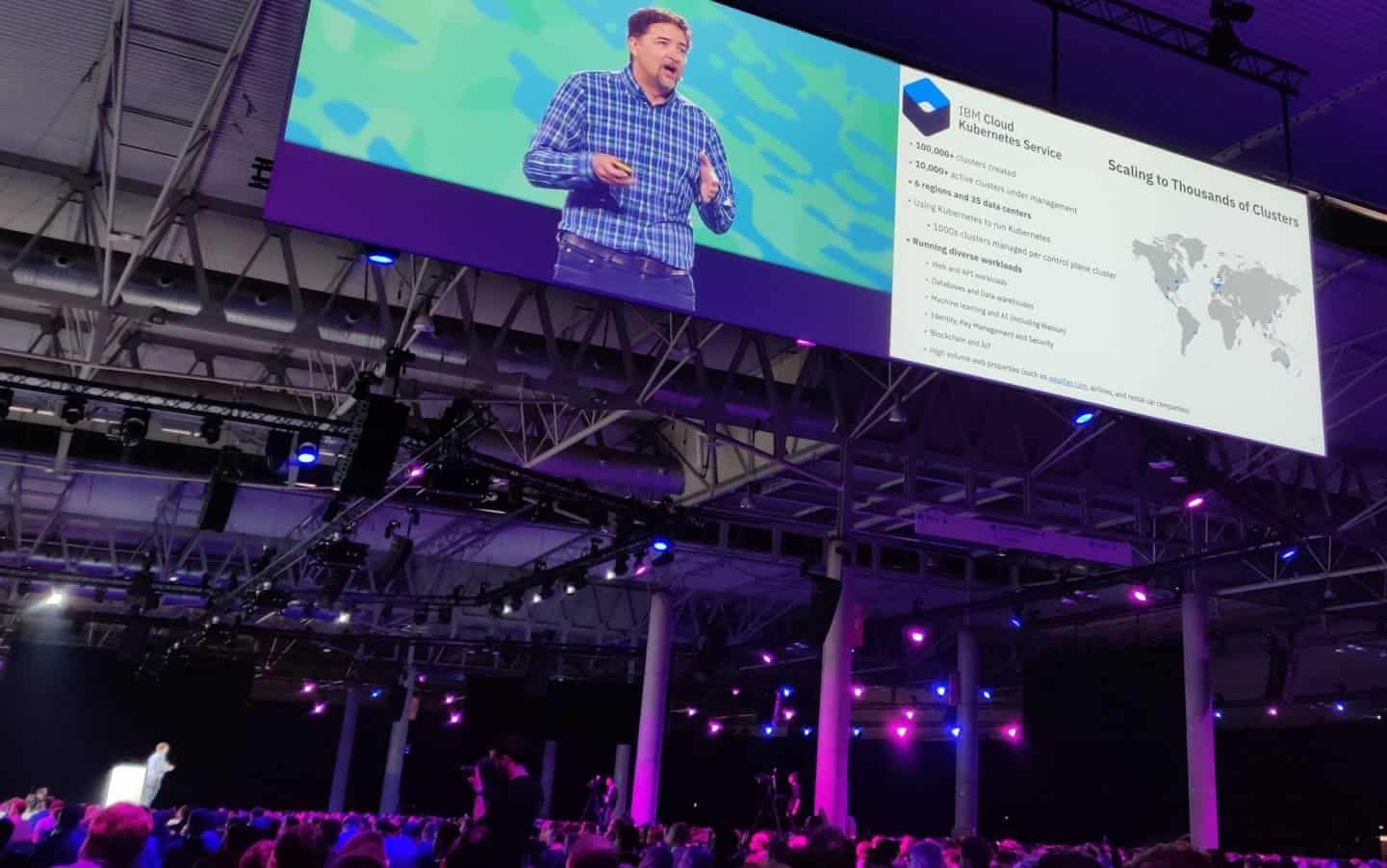IBM makes Razee open source and wants to give organizations worldwide a more flexible way to roll out and update applications fast but focused and flexible.
Maybe you want to roll out an update for an application in a geographically small region first, or a large customer is just undergoing a critical migration, which makes a change to an app very inconvenient. IBM ran into the limitations of the traditional production pipeline, and therefore built Razee.
Three pillars
At KubeCon 2019 in Barcelona, the software giant will be making that project open source. Razee is based on three pillars, says Jason McGee, VP and CTO of IBM’s cloud platform to Techzine. First and foremost, we are switching from a traditional push model in which applications are pushed into production, to a pull model in which clusters themselves receive updates. Compare it to the update model of your smartphone.

Razee then links an extensive rule system to this pull model. This way you can define which versions of applications belong where, and where updates are not desired yet, says McGee. This allows an organisation to send new apps or new versions of microservices very flexibly into the wild in phases. This makes it easy to start the roll-out in less critical regions, and to save large customers as much as they have asked for, for example.
Overview
The approach contrasts with a monolithic roll-out for fragmentation, as a result of which Razee also contains a third pillar. The tool draws up an inventory on the basis of reports from the clusters themselves. They let you know which app or service is on which version, after which you have a handy overview.
IBM developed Razee out of necessity to flexibly roll out microservices to scale, but it is convinced that the Razee project will also find something to be desired outside the company. Even in smaller organisations, it is useful to roll out fragmented applications and to have a handy version overview available, McGee predicts.
This news article was automatically translated from Dutch to give Techzine.eu a head start. All news articles after September 1, 2019 are written in native English and NOT translated. All our background stories are written in native English as well. For more information read our launch article.